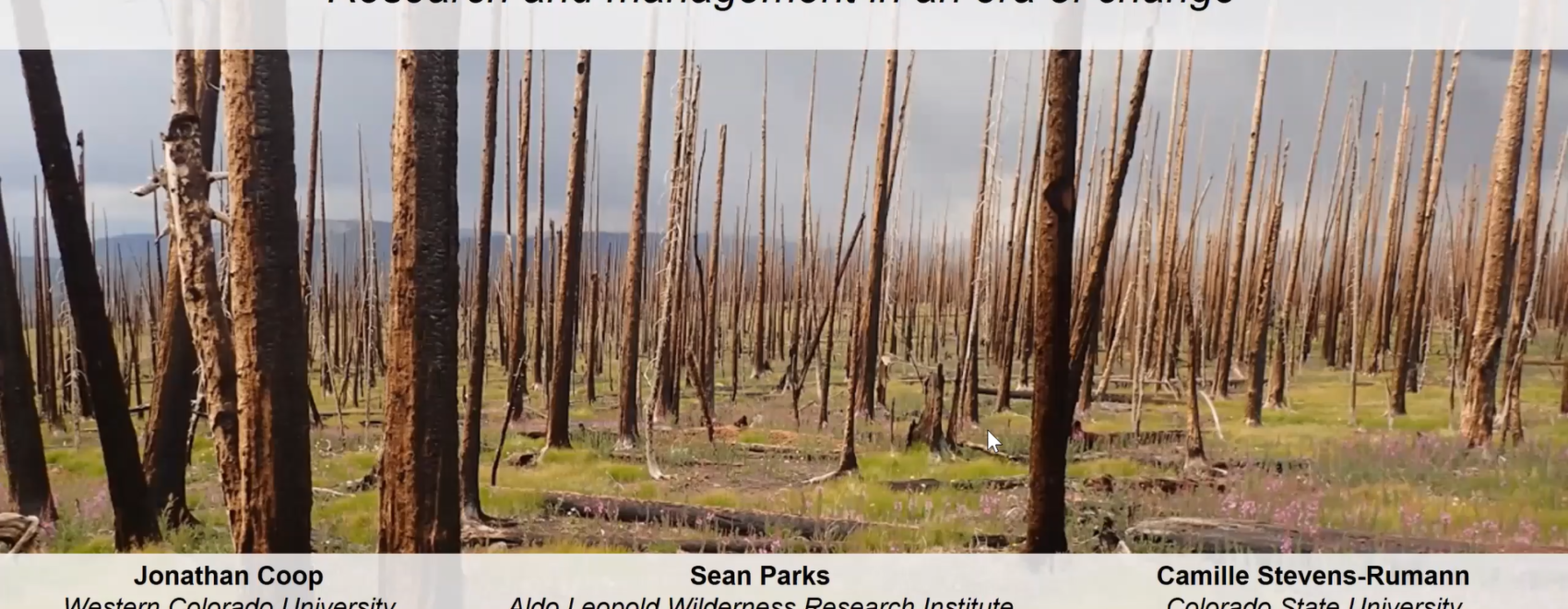Presenters: Jonathan D. Coop, Sean A. Parks, and Camille S. Stevens-Rumann.
Changing disturbance regimes and climate can overcome forest ecosystem resilience. Following high-severity fire, forest recovery may be compromised by lack of tree seed sources, warmer and drier postfire climate, or short-interval reburning. A potential outcome of the loss of resilience is the conversion of the pre-fire forest to a different forest type or non-forest vegetation. Conversion implies major, extensive, and enduring changes in dominant species, life forms, or functions, with impacts on ecosystem services. The webinar will synthesize a growing body of evidence of fire-driven conversion and our understanding of its causes across western North America. Increasing forest vulnerability to changing fire activity and climate compels shifts in management approaches, and we propose key themes for applied research coproduced by scientists and managers to support decision-making in an era when the pre-fire forest may not return.

